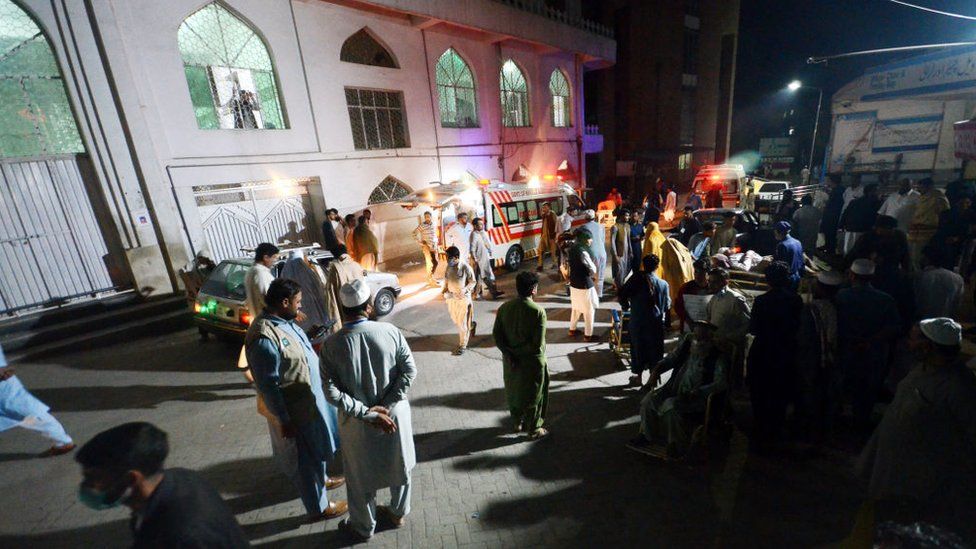
The 6.5 magnitude earthquake sent people rushing out of their homes
By Joel Guinto & Yogita Limaye
BBC News
At least 12 people have been killed and more than 200 injured after a powerful earthquake shook large parts of Pakistan and Afghanistan.
The 6.5-magnitude quake damaged buildings, triggered landslides and sent people running into the streets.
It struck on Tuesday evening, centred in a mountainous region in Afghanistan’s north-east near the border with Pakistan.
Tremors from the remote Jurm valley were felt as far as India.
“It was a terrifying tremor. I had never felt such a tremor before in my life,” Kabul resident Khatera told AFP news agency after rushing out of her fifth-storey apartment.
Nine of the confirmed deaths were reported in the valley region of Khyber Pakhtunkhwa in Pakistan.
Three others were killed in Afghanistan, the country’s health ministry spokesman said. A child was among those killed in the Laghman province near the country’s border with Pakistan, AFP reported.
Many families had been out of their homes celebrating the Persian New Year or Norwuz when the quake hit.
But the damage found so far had been less than feared, emergency workers in Khyber Pakhtunkhwa told AFP.
However the remoteness and rugged terrain of affected areas is likely to slow relief and rescue work.
Many in the affected regions braved near-freezing temperatures to sleep outside after the quake – fearing aftershocks. Some had dashed out of their homes barefoot when they felt the shaking.
In the capital of Islamabad, a vast multi-storey residential block was evacuated after huge cracks appeared in the building.
Phone lines have been affected, and in Pakistan the highway in the worst-hit Swat area has been blocked by landslides.
Pakistan Prime Minister Shehbaz Sharif has asked disaster agencies to take emergency measures to help people.
Tremors were felt over a 1,000-km area that spans India, Uzbekistan, Tajikistan, Kazakhstan, Kyrgyzstan, Afghanistan and Turkmenistan, according to the European-Mediterranean Seismological Centre.
Earthquakes are more likely in this region because it lies at the juncture of the Eurasian and Indian tectonic plates.
In June last year more than 1,000 people were killed after a 5.9-magnitude quake struck Afghanistan’s Paktika province, the country’s deadliest in nearly a quarter of a century.
With additional reporting by BBC Urdu in Islamabad

